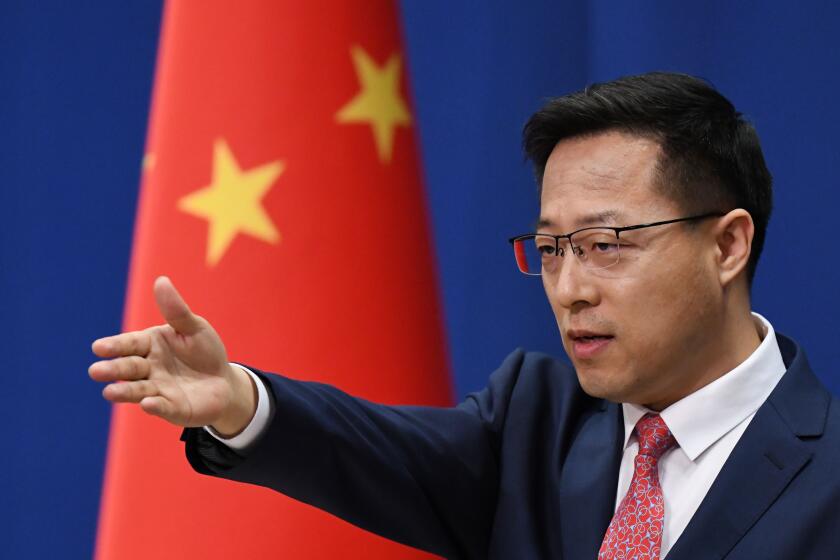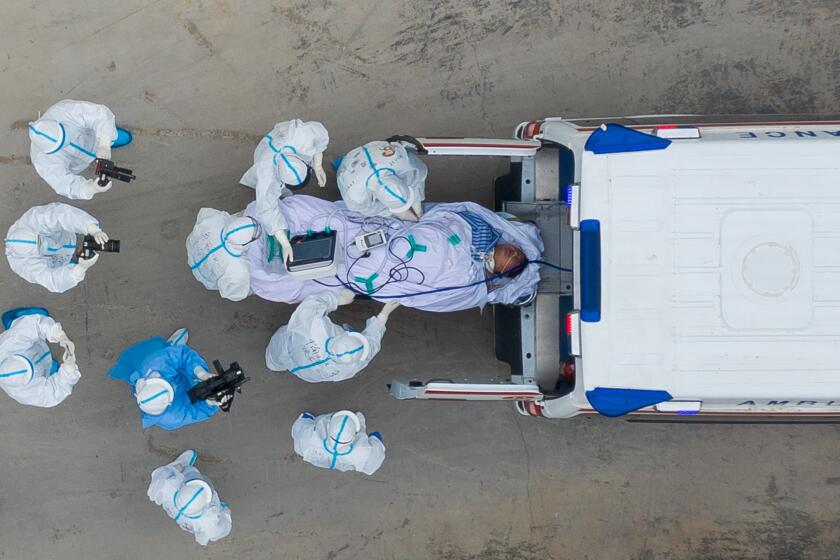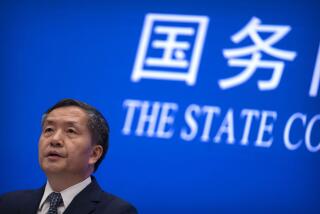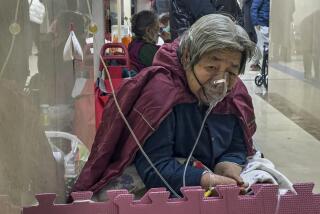China delayed releasing coronavirus information for days at start of outbreak, frustrating the WHO
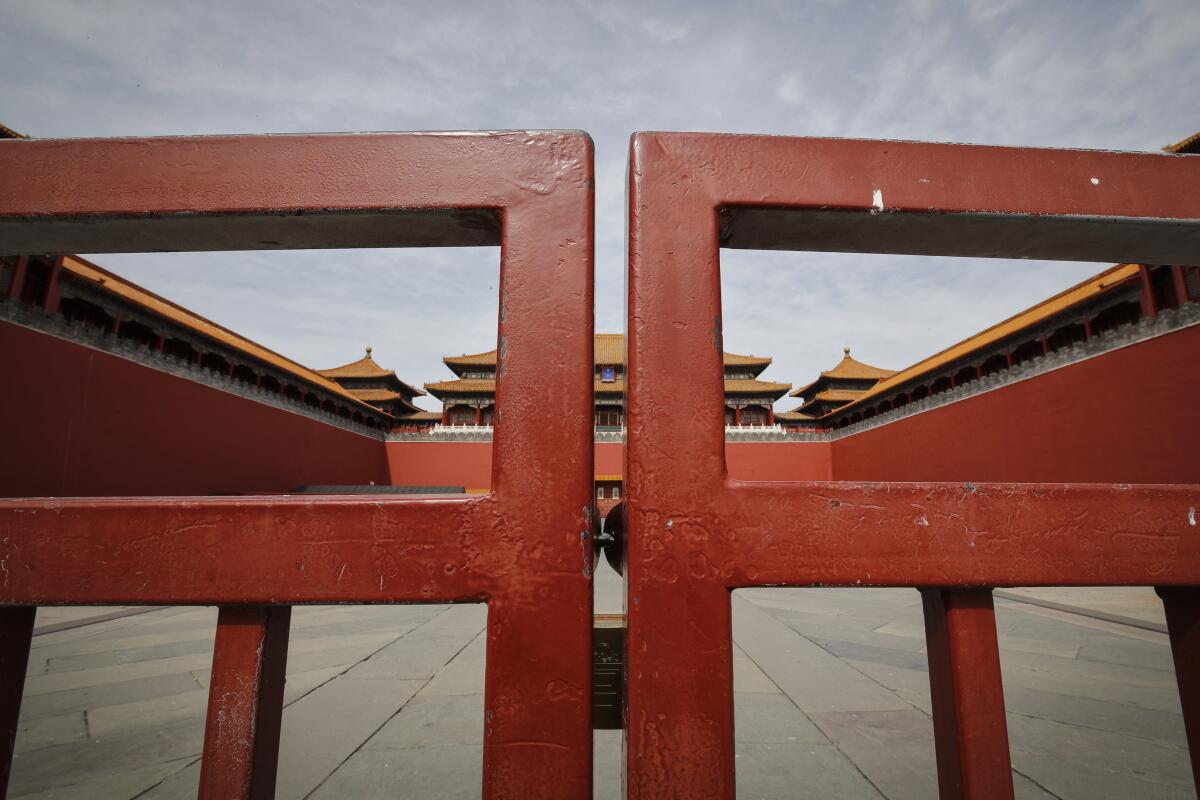
Throughout January, the World Health Organization publicly praised China for what it called a speedy response to the new coronavirus. It repeatedly thanked the Chinese government for sharing the genetic map of the virus “immediately,” and said its work and commitment to transparency were “very impressive, and beyond words.”
But behind the scenes, it was a much different story, one of significant delays by China and considerable frustration among WHO officials over not getting the information they needed to fight the spread of the deadly virus, the Associated Press has found.
Despite the plaudits, China sat on releasing the genetic map, or genome, of the virus for more than a week after three different government labs had fully decoded the information. Tight controls on information and competition within the Chinese public health system were to blame, according to dozens of interviews and internal documents.
Chinese government labs only released the genome after another lab published it ahead of authorities on a virology website on Jan. 11. Even then, China stalled for at least two weeks more on providing the WHO with detailed data on patients and cases, according to recordings of internal meetings held by the U.N. health agency through January — all at a time when the outbreak arguably might have been dramatically slowed.
Although the WHO continued to commend China publicly, the recordings obtained by the AP show they were concerned that China was not sharing enough information for them to assess the risk posed by the new virus, costing the world valuable time.
“We’re currently at the stage where, yes, they’re giving it to us 15 minutes before it appears on CCTV,” the WHO’s top official in China, Dr. Gauden Galea, said at one meeting, referring to state-owned China Central Television.
Despite President Trump’s statements that the coronavirus was released from a laboratory in Wuhan, scientists say the evidence points to a natural origin.
The story behind the early response to the pandemic comes at a time when the U.N. health agency is under siege. President Trump cut ties with the WHO on Friday after blasting the agency for allegedly colluding with China to hide the extent of the epidemic. Chinese President Xi Jinping said China has always provided information to the WHO and the world “in a most timely fashion.”
The new information does not support the narrative of either the U.S. or China, but portrays an agency, now stuck in the middle, that was urgently trying to solicit more data. Although international law obliges countries to report information to the WHO that could have an impact on public health, the U.N. agency has no enforcement powers. Instead, it must rely on the cooperation of member states.
The AP has found that, rather than colluding with China, the WHO was itself largely kept in the dark, as China gave it only the minimal information required. But the agency did attempt to portray China in the best light, most likely to coax the country into providing more outbreak details.
WHO officials worried about how to press China for more information without angering authorities or jeopardizing Chinese scientists, whom they praised for decoding the genome with astonishing speed. Dr. Michael Ryan, the WHO’s emergencies chief, said the best way to “protect China” was for the WHO to do its own independent analysis, because otherwise the spread of the virus between people would be in question and “other countries will take action accordingly.”
‘Put on a mask and shut up’: China’s new ‘Wolf Warriors’ spread hoaxes and attack a world of critics
The aggressive nationalism of China’s diplomats matches the swagger of Xi Jinping’s China, which is determined to deflect blame for the coronavirus.
From the time the virus was first decoded Jan. 2 to when the WHO declared a global emergency Jan. 30, the outbreak grew by a factor of 100 to 200 times, according to retrospective Chinese Center for Disease Control and Prevention data.
The WHO officials named in this story declined to answer questions asked by the AP without audio or written transcripts of the recorded meetings, which the AP was unable to supply to protect its sources.
“Our leadership and staff have worked night and day ... to support and share information with all member states equally, and engage in frank and forthright conversations with governments at all levels,” a WHO statement said.
China’s National Health Commission and Ministry of Foreign Affairs had no comment. But in the past few months, China has repeatedly defended its actions, and many other countries — including the U.S. — have responded to the virus with even longer delays of weeks and even months.
For weeks, Trump downplayed the coronavirus as his administration delayed or bungled crucial early steps in its response. Even some top aides warned it posed a greater risk than the president claimed.
In late December, doctors noticed mysterious clusters of patients with unusual pneumonia. Seeking answers, they sent samples to commercial labs. By Dec. 27, one company, Vision Medicals, had pieced together most of the genome of a new virus with striking similarities to SARS. They alerted Wuhan officials, who, days later, issued internal notices warning of the unusual pneumonia.
On Dec. 30, Shi Zhengli, a renowned coronavirus expert at the Wuhan Institute of Virology, was alerted to the disease, and by Jan. 2, her team had fully decoded it.
But when it came to sharing the genome with the world, things went awry. China’s top medical authority, the National Health Commission, issued a confidential notice forbidding labs from publishing about the virus without authorization. The order barred Shi’s lab from publishing the sequence or warning of the possible danger.
Commission officials later said the order was to prevent any accidental release of the then-unknown pathogen, and to ensure consistent results by giving it to four state labs to identify at the same time.
By Jan. 5, two other government labs sequenced the virus, and another lab in Shanghai led by Zhang Yongzhen had also decoded it. Zhang warned the National Health Commission the virus was “likely infectious.” The Chinese CDC raised its emergency level to the second highest, but did not have the authority to alert the public.
Suspicious cases started surfacing across the region. In Thailand, airport officials pulled aside a woman traveling from Wuhan with a runny nose, sore throat and high temperature. Scientists at Chulalongkorn University soon figured out she was infected with a new coronavirus, but did not have a sequence from China to match it.
Anguish and fury are growing in China, inflamed by an ugly reality: that authorities prioritized saving face over the health and safety of the people.
WHO officials, meanwhile, grumbled in internal meetings that China was stalling on providing crucial outbreak details even though it was technically meeting its obligations under international law. Ryan, the WHO’s emergencies chief, said it was time to “shift gears” and push for more information.
“The danger now is that despite our good intent ... there will be a lot of finger-pointing at WHO if something does happen,” he said.
On Jan. 11, Shanghai’s Zhang finally published the coronavirus sequence ahead of health authorities on virological.org, used by researchers to swap tips on pathogens. It was only then that the Chinese CDC, the Wuhan Institute of Virology and the Chinese Academy of Medical Sciences raced to publish their sequences, doing so on Jan. 12.
On Jan. 20, Chinese authorities warned that the virus spread between people. WHO dispatched a small team to Wuhan from its Asia offices. China representative Galea told colleagues the Chinese were “talking openly and consistently about human-to-human transmission.”
WHO’s emergency committee of independent experts met twice that week and decided against recommending an emergency. But the agency’s concern prompted an unusual trip to Beijing by WHO director-general Tedros Adhanom Ghebreyesus and top scientists.
At the end of Tedros’ trip, the WHO convened another emergency meeting, finally declaring a global emergency on Jan. 30. Tedros thanked China profusely, declining to mention any of the WHO’s earlier frustrations.
“We should have actually expressed our respect and gratitude to China for what it’s doing,” he said. “It has already done incredible things to limit the transmission of the virus to other countries.”
More to Read
Sign up for Essential California
The most important California stories and recommendations in your inbox every morning.
You may occasionally receive promotional content from the Los Angeles Times.
